Sloth bears are large mammals native to India. These bears are unique in their dietary habits, as their primary food source is insects! Like many other bear species, humans have threatened them with extinction, primarily through to habitat loss. Because of this, the IUCN Red List labels them as Vulnerable. Read on to learn about the sloth bear.
Description of the Sloth Bear
This bear species is medium in size, and can weigh anywhere from 120 pounds to 320 pounds, depending on age, locations, and sex. Sloth bears have black fur, though some individuals have white markings on their chests.
The two primary distinctions between this species and other bears are their ears and lips. Unlike the small round ears of most bear species, sloth bears have large ears. Their ears are also floppy and coated in long fur. This species also has long, floppy lips.
Interesting Facts About the Sloth Bear
Humans have threatened these bears with extinction, and they need our help. Learn more about what makes sloth bears unique below.
- Flappy Bear – Sloth bears have long lower lips and a large nose. While these features may make the bear look like it got into a bee hive, they actually serve an important purpose. Feeding on insects is much easier when you can easily smell them with your large nose, and slurp them up with your long lips!
- Piggyback – Until cubs are large enough to keep up, or old enough to protect themselves, mother bears carry them on their backs. At the first sign of danger the cubs hop on mom’s back and she protects them against potential predators. Cubs will also ride mom’s back when she wants to move faster than they can walk or run.
- Sibling Rivalry – Sloth bears can have two and even three cubs at a time. When riding on mom’s back, the cubs will fight over the best riding spot. Cubs will seek their mother’s back for up to nine months before they are large enough to defend themselves, and will fight amongst themselves for their favorite spot the whole time.
- Dancing Bears – Indian dancing bears are almost always sloth bears. Despite banning the practice in 1972, India still has a large number of dancing bears. The Indian government banned this “entertainment” because bears were frequently blinded, had their teeth removed, and were improperly fed leading to malnutrition. A number of coalitions are still attempting to end this practice by providing bear handlers with alternate jobs.
Habitat of the Sloth Bear
These bears live in a variety of habitats with large insect populations, particularly termite mounds. They are found in forests and grasslands throughout their range. Most bears live in areas with lower elevation, rather than mountainous regions. They prefer dry forests to rainforests, and will frequently forage in rocky outcrops and other areas with plenty of insects to eat.
Distribution of the Sloth Bear
Sloth bears live throughout regions of India, and some surrounding areas. Human expansion has reduced some of their former range in southwestern and northern India. Humans have driven them to extinction in Bangladesh, though these bears also reside in southern Nepal, and Sri Lanka. You will find these bears nowhere else in the world, outside of zoos.
Diet of the Sloth Bear
This species feeds primarily on insects, and scientists consider them insectivores. Termites are their favorite food, and they use their keen sense of smell to locate termite mounds. The bears use their long, curved claws to rip open the termite mounds and slurp up the insects.
They will also feed on flowers, mangoes, jackfruit, sugar cane, honey, wood apples, and other fruits and seeds. Unlike brown bears and other bear species, they do not congregate to a single food source. Also unlike other bear species, they rarely feed on mammals of any kind.
Sloth Bear and Human Interaction
Humans have degraded the sloth bear’s habitat to the point of conflict. The bears are left without places to search for food, and will forage garbage and crops in an attempt to survive.
Sloth bears have sharp teeth and long claws. When confronted by humans they will attack and can cause serious injury, or even death. Community-based incentives to replant forests and protect sloth bear habitat is important in the conservation of this species.
Domestication
Humans have not domesticated sloth bears in any way.
Does the Sloth Bear Make a Good Pet
No, sloth bears do not make good pets. They are more than capable of defending themselves against tigers, elephants, rhinos, and other large animals. This certainly means they could easily injure or kill humans! In most places it is illegal to own a sloth bear as a pet.
Sloth Bear Care
In zoos, sloth bears require large enclosures to roam and exercise. They are excellent swimmers, and most habitats include a large water body to swim and play in.
As with other bear species, zookeepers provide a variety of environmental enrichment in the form of toys, puzzle feeders, and more. Their diet is similar to that of other insectivores, like anteaters, and they thrive on commercial insectivore feed and fruits.
Behavior of the Sloth Bear
Most of these bears are nocturnal, and most active at night. Females with cubs will be more active during the day, likely to avoid potential predators of her cubs that hunt at night.
While foraging, both cubs and adults are capable of swiftly climbing trees. However, unlike other bear species, cubs do not climb trees to escape a threat. Instead, they remain on their mother’s back and she aggressively drives away the predator.
Reproduction of the Sloth Bear
Female sloth bears reproduce at different times of year based upon their location. Once they mate, their gestation period is nearly nine months long. The mother bear finds a cave or rock cavity to safely give birth, and most litters contain two or three cubs.
The cubs will ride on their mother’s back until they are about nine months old. They can walk at one month old, but will ride on mom’s back for safety and to travel quickly. They do not become fully independent until they are two or three years old.

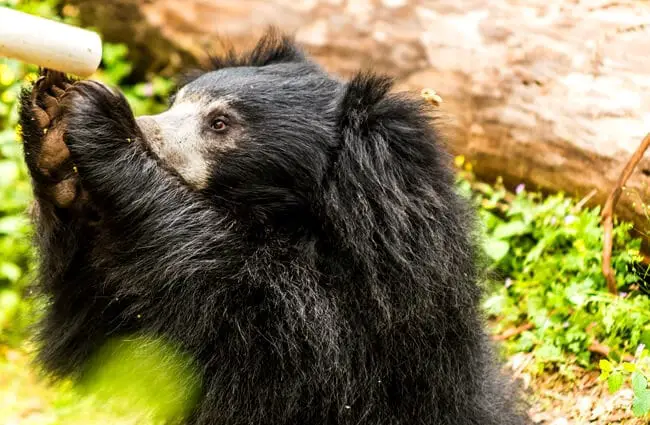
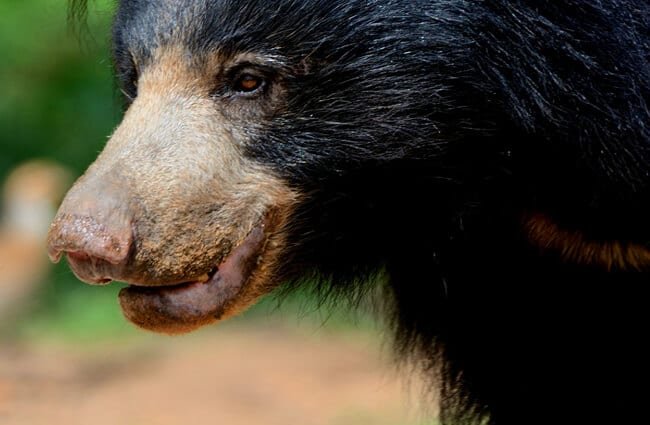


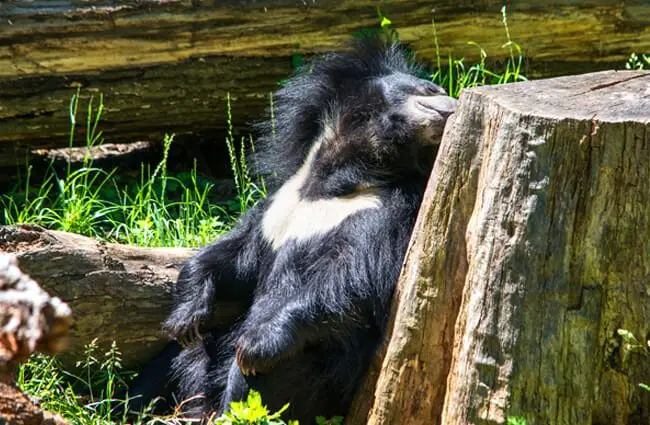
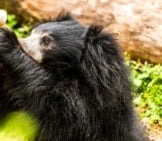

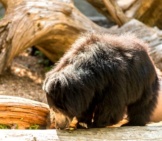
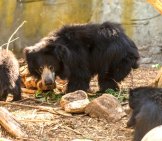
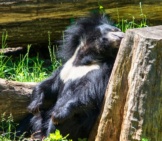
![Red Angus Closeup of a beautiful Red Angus cowPhoto by: U.S. Department of Agriculture [pubic domain]https://creativecommons.org/licenses/by/2.0/](https://animals.net/wp-content/uploads/2020/03/Red-Angus-4-238x178.jpg)












![Red Angus Closeup of a beautiful Red Angus cowPhoto by: U.S. Department of Agriculture [pubic domain]https://creativecommons.org/licenses/by/2.0/](https://animals.net/wp-content/uploads/2020/03/Red-Angus-4-100x75.jpg)

